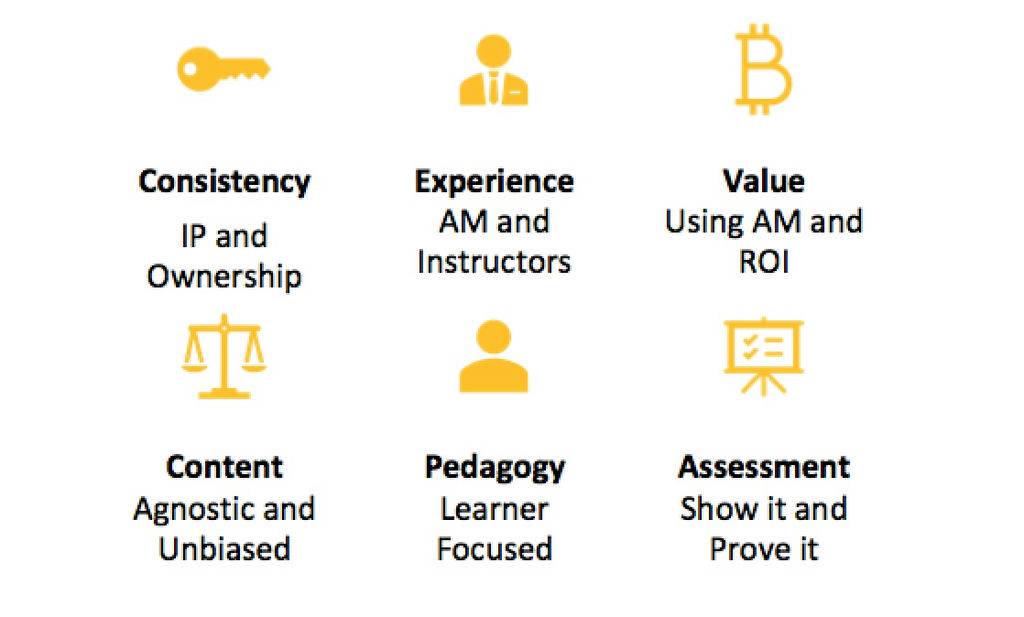Seth Godin, accomplished author said, “You’re born with talent. You earn a skill.” TBGA wants to help you acquire skill in AM. Get there faster. Make fewer mistakes. Make bigger promises. Consistency – IP and Ownership
Consistency – IP and Ownership
The material presented is owned and updated by the trainer regularly. Everyone gains the same knowledge and insights so that a certificate is meaningful. Seminars are useful and educational, but distinct because the speakers may not be trained in education nor do they seek to take a group of people and arm them with the same information, the same vocabulary or the same learning objectives. Training helps get many people on the same page. If the trainer has not invested in their content, why should you?
Experience – AM and Instructors
Do the trainers have the experience to teach? Do they have experience in the field to share? The ability for the trainer to go into a deep dive is critical to ensure your team gets what they want from the training. Are the trainers enthusiastic about what they do? Can they communicate well? Being a good engineer is a good start but being able to communicate effectively, is essential. The best educators can explain the same concept in 3 or more different ways so each learner can “get” the concept.
Value – Using AM and ROI
Training is meant to improve the skills of the employee which bring value to the company. Does your trainer have evidence of their training resulting in a return on this investment?
Content – Agnostic and Unbiased
Is there an organizing framework for presenting the content? Is it comprehensive or does it only describe one or two AM technologies? Are the instructors independent and agnostic to give you an unbiased view? Can the training material meet your requirements? Is there is a stated goal and are there learning objectives? Do the trainers have their own content, case studies, quizzes as opposed to referring to well known examples available in the literature?
Pedagogy – Learner Focused
Does the training use text, images, videos, case studies, discussions, and team activities effectively to engage different learning styles? Everyone has a different learning style, and while presentations may convey lots of information quickly, they cater to passive learners. Discussions, case studies, and problem-based learning appeal better to active learners, who learn by engaging with the material, the instructor, and their peers. Trainers should employ proper pedagogy to ensure that everyone meets the learning objectives and training outcomes.
Assessment – Show it and Prove it
How do you know the training was successful? Have former students successfully applied their training after course completion? Have they come back after training with follow-up questions showing they have retained and are applying the training? A concluding assessment (quiz, presentation, or case study) is essential in gauging the students’ absorption of the information. If the employee does not retain the information, then the training was very expensive. Learning and development of new skills requires knowledge acquisition and knowledge application. By assessing this knowledge, we ensure that much of it is retained.
John E Barnes is the Founder and Managing Director of The Barnes Group Advisors, the largest independent AM engineering firm. He has a lengthy service in aerospace working to support prominent projects like the F-22, F-35, C-130J, X-47B and A350.


